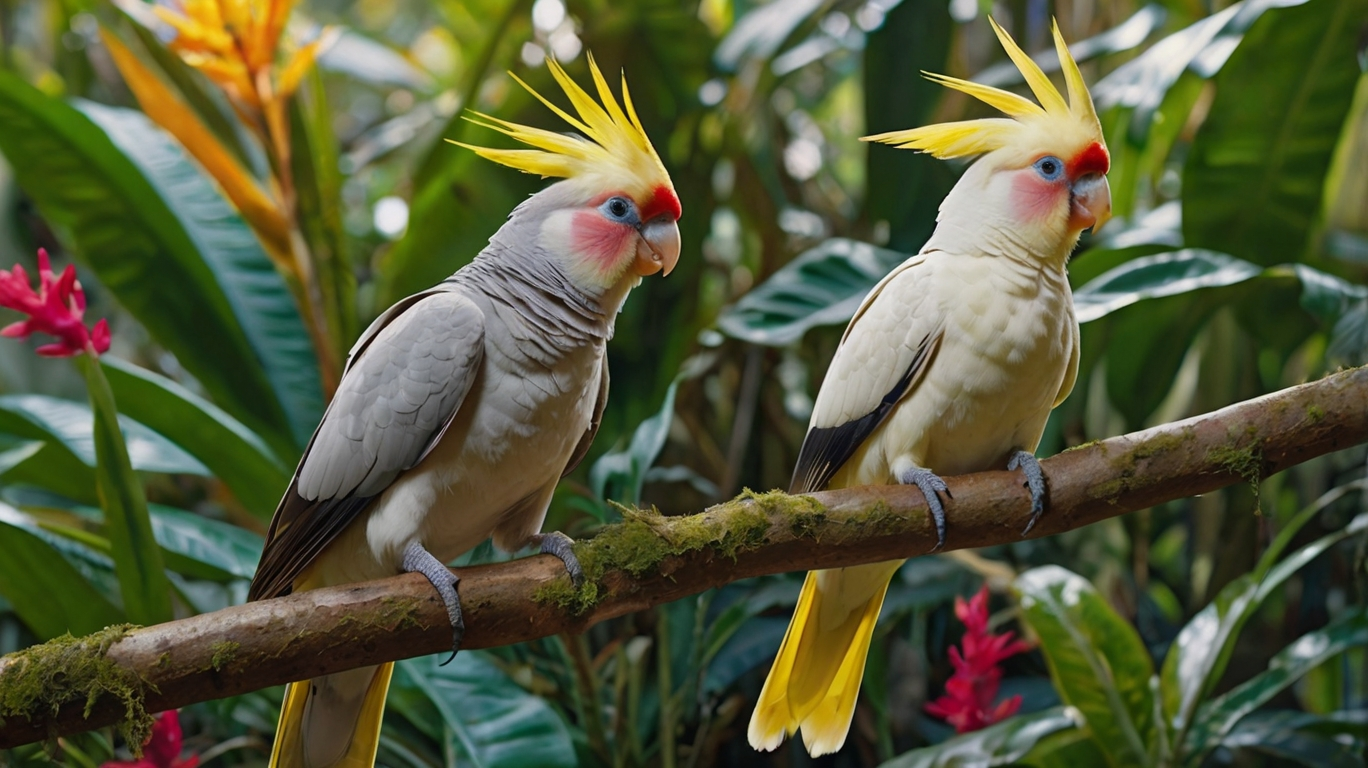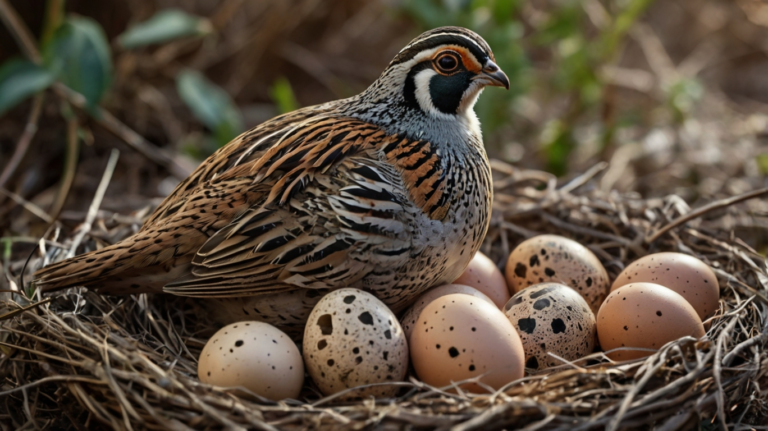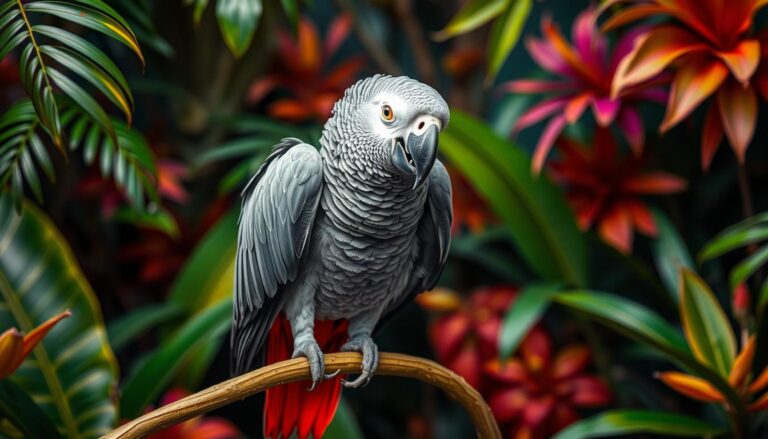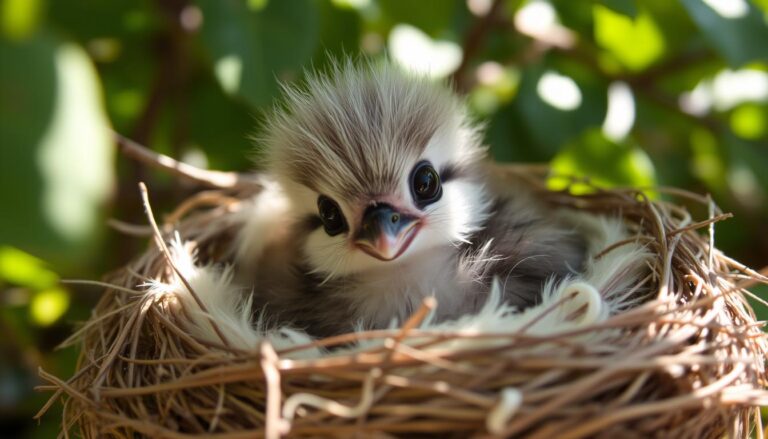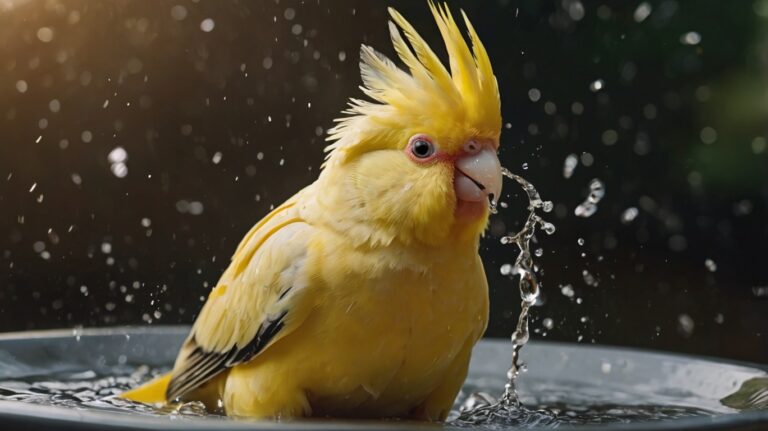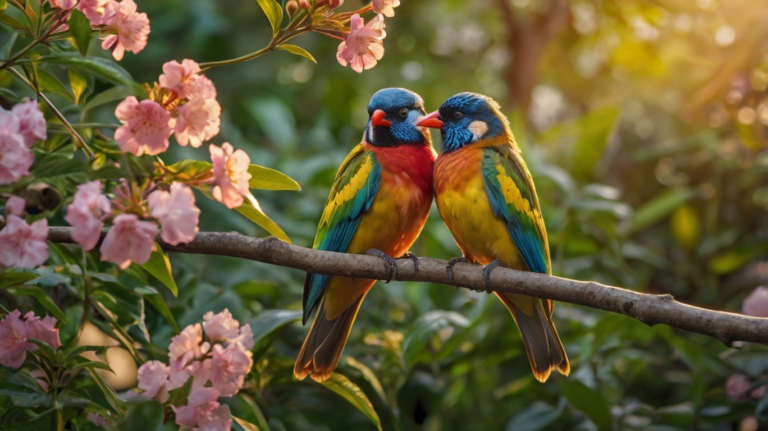Cockatiel Breeding: 5 Incredible Secrets for Happy Success
Introduction
Have you ever watched a pair of cockatiels interact and wondered if you could raise your own hatchlings at home? Cockatiel breeding can be incredibly rewarding, especially if you’re eager to watch your feathered friends establish a bond and nurture their chicks. Whether you’re already a seasoned bird lover or a total newcomer to aviculture, stick around—this playful yet informative guide is about to give you everything you need to know to embark on your cockatiel breeding journey with confidence.
In the following sections, you’ll discover the essential steps, challenges, and joys of cockatiel breeding. You’ll learn how to set up a breeding-friendly environment, the signs that indicate your pair is ready, and how to care for both eggs and chicks. This article is for informational purposes only and does not replace professional veterinary advice, but it’s packed with expert-driven insights and real-life experiences to help you succeed. Ready to get started? Let’s dive right in.
Understanding Cockatiel Breeding Fundamentals
How Nature Plays a Role
Although cockatiel breeding can occur throughout the year in captivity, these birds typically breed in warmer seasons in the wild. According to the American Federation of Aviculture, cockatiels (Nymphicus hollandicus) originate from Australia’s semi-arid regions, where breeding correlates with rainfall and food availability (source). This natural rhythm inspires pairs to mate when conditions are favorable and resources are plentiful.
Key Breeding Triggers
- Adequate Daylight: Longer daylight hours often signal to cockatiels that it’s time to breed.
- Balanced Nutrition: High-quality food with ample protein can stimulate breeding behavior.
- Comfortable Environment: Cockatiels need a peaceful, stable setting, free from constant disruptions or stressors.
Your goal is to recreate these cues—plenty of light, nutritious feeding, and a comfortable nest area—to encourage successful cockatiel breeding in your home.
Choosing the Right Pair
Age and Health Requirements
For optimal cockatiel breeding success, select a male and female that are at least 18–24 months old. Younger birds may not be fully mature and can face complications if they attempt breeding too early. Both should undergo a vet check to ensure they’re free of diseases and physically robust enough to handle the rigors of mating, egg-laying, and chick-rearing.
- Ideal Breeding Age: 2 to 5 years
- Health Status: No signs of respiratory issues, feather plucking, or chronic conditions
- Veterinary Screening: Fecal tests, blood work, and overall physical exam
Compatibility and Bonding
Birds may be physically ready, but cockatiel breeding success also requires a good emotional match. Cockatiels often choose their partners based on mutual preening and singing. If you notice aggression or disinterest, consider pairing different birds. Over time, a well-bonded pair will share food, preen each other’s feathers, and exhibit courtship behaviors like head bobbing or wing flutters.
Setting Up the Perfect Breeding Environment
Cage Size and Configuration
A cramped cage can lead to unnecessary stress, reducing your chances of successful cockatiel breeding. Provide a spacious breeder’s cage, ideally measuring around 24 inches in width, 24 inches in height, and 24 inches in depth (or larger if possible). If you have an aviary, even better—extra room grants your cockatiels the freedom to move around, exercise, and engage in natural behaviors.
- Separate the Pair: Some breeders house males and females in separate cages, introducing them only when breeding is intended.
- Bar Spacing: Approximately 0.5 to 0.75 inches to prevent injuries.
- Horizontal Bars: These can help cockatiels climb more comfortably.
Nesting Box Essentials
A nesting box is crucial for cockatiel breeding because hens need a secure place to lay eggs. Look for a wooden, side-entry box about 12x12x12 inches. Line it with nesting material like wood shavings to cushion and insulate the eggs.
- Dark, Quiet Spot: Position the box in a calm area of the cage.
- Easy Access: Include a perch or a small ladder leading into the box.
- Inspection Door: Some breeder boxes have a sliding door or top lid so you can monitor egg development without disturbing the parents too much.
Lighting and Temperature
Cockatiels are native to sunny Australia, so a steady cycle of about 10–14 hours of light per day simulates natural conditions. If your home lacks sufficient sunlight, use full-spectrum lighting that mimics daylight. Keep the room temperature around 70–80°F to help ensure optimum conditions for cockatiel breeding.
Nutrition: Fueling Successful Cockatiel Breeding
Balanced Diet Breakdown
A quality diet is the cornerstone of healthy cockatiel breeding. Cockatiels require higher protein levels during breeding season, so enrich their usual pellet-based diet with eggs, legumes, or specially formulated breeding food.
- Pellets: Look for brands created for cockatiels with balanced nutrients.
- Fresh Vegetables: Offer leafy greens, bell peppers, carrots, and broccoli.
- Fruits: Provide in moderation—apples (seedless), berries, and melon.
- Protein Sources: Hard-boiled eggs (finely chopped), cooked beans, or specialized breeding mixes.
Supplements and Water
Calcium is critical for egg-laying hens to prevent complications like egg binding. Supply a cuttlebone or mineral block inside the cage. Fresh, clean water is essential—replace it daily and consider a water bottle for optimal hygiene.
- Calcium: Cuttlebone, mineral block, or calcium-enriched grit
- Vitamins: Check with an avian vet for recommended supplements
- Hydration: Multiple water stations may encourage better hydration
A diet that meets these nutritional guidelines dramatically increases the likelihood of fruitful cockatiel breeding and healthy chicks.
Mating Behaviors to Watch For
Courtship Rituals
Recognizing courtship behaviors is both fun and vital in assessing your pair’s readiness for cockatiel breeding. Common signs include the male strutting, bobbing his head, and singing elaborate songs to grab the female’s attention. The female may respond by crouching or swaying side to side.
Copulation
Successful cockatiel breeding culminates in the actual mating process, where the male mounts the female’s back. While this moment may be brief—sometimes just seconds—repeated mating is normal. You might see the male gently “beaking” the female’s crest or neck feathers beforehand, which helps strengthen the bond.
- Quiet Observation: Avoid sudden movements or loud noises that could disrupt them.
- Daily Mating: They may mate multiple times a day during peak breeding season.
- Respect Their Space: Constant intrusion can stress the pair and reduce breeding success.
Egg Laying and Incubation
Timeline for Egg Production
Once a female is successfully mated, she typically lays her first egg about 1–2 weeks later. For cockatiel breeding, a standard clutch size is 4–6 eggs. The hen lays them every other day, often in the late afternoon or evening.
Egg-laying overview:
| Stage | Approximate Timeframe | Key Observations |
|---|---|---|
| Pair Bonding & Mating | Varies; can take days/weeks | Courting, mutual preening, potential aggression |
| First Egg Laid | 1–2 weeks after mating starts | Hen may sit in the nesting box frequently |
| Clutch Completion | ~7–12 days after first egg | 4–6 eggs total; laid every other day |
| Incubation Period | ~18–21 days after last egg | Parents alternate sitting on eggs |
| Hatching | Typically day 18–21 from last egg | Chicks emerge, eyes closed, covered in down |
Keep a close watch during this phase of cockatiel breeding. Each hen’s schedule can vary slightly, but awareness of the general timeline helps you spot any irregularities.
Incubation Dynamics
Both male and female cockatiels often share incubation duties. The hen may take the night shift, while the male might sit on the eggs more during the day. If the pair is inexperienced, you may see some confusion about incubation roles, but most eventually figure it out.
- Humid, Warm Environment: Keep the nesting box in a room free from drafts.
- Minimal Disruption: Let the parents handle the majority of care, checking only when necessary.
- Fertility Checks: “Candling” (shining a light through the egg) can help you see embryo development, but do so sparingly to avoid disturbing the pair.
Hatching and Chick Development
Welcoming New Hatchlings
Eggs typically hatch about 18–21 days after the final egg is laid. When the first chick hatches, it’s an exciting milestone in your cockatiel breeding adventure. The chick will appear with closed eyes, a soft layer of down, and a strong appetite.
- Feeding Schedule: Parents will feed the chicks a regurgitated mixture known as “crop milk.”
- One at a Time: Chicks hatch in the order eggs were laid, usually a couple of days apart.
- Chick Health Checks: Look for signs of adequate feeding—full, rounded crops and steady growth.
Growth Stages
Chicks grow rapidly. Within 10 days, their pinfeathers start emerging, giving them a prickly appearance. By 3–4 weeks, you’ll see the formation of actual feathers, and they’ll begin exploring the nesting box. At around 5–6 weeks, many chicks attempt to fledge, practicing short flights around their enclosure.
Pro Tip: Keep a growth chart and weigh each chick daily or every other day. Sudden weight loss can indicate feeding problems, which may require immediate veterinary attention.
Hand-Feeding vs. Parent-Feeding
Pros and Cons of Hand-Feeding
Some enthusiasts prefer hand-feeding chicks, believing it fosters a tamer pet. Hand-feeding requires specialized formulas, strict hygiene, and consistent feeding schedules—often every 2–3 hours for newborns. However, it can lead to complications if not done correctly, such as aspiration or malnutrition.
- Pros: Tamer chicks, closer human-bird bond
- Cons: Time-consuming, riskier if inexperienced, potential for mistakes
Benefits of Parent-Feeding
Parent-fed chicks often learn crucial social behaviors from adult cockatiels. Observing the parents can be less stressful and typically ensures the baby cockatiels get balanced nutrition. If you’re just starting your cockatiel breeding journey, letting the parents take the lead may be the safest path—unless a vet advises otherwise.
Early Socialization and Weaning
Handling Chicks Safely
Even if you choose parent-feeding, brief daily handling sessions can help chicks grow accustomed to humans. Around 2–3 weeks of age, you can gently pick them up for a few minutes. This fosters trust without interfering too much in the cockatiel breeding process.
- Wash Hands: Always before and after holding chicks.
- Be Gentle: Support the chick’s body, avoiding any pressure on the crop.
- Short Sessions: Start with just a minute or two, gradually increasing as they get older.
Transition to Solid Foods
Around 4–5 weeks, chicks might begin nibbling on soft foods—like millets or finely chopped greens—alongside their regular feedings. By 6–8 weeks, many are fully or partially weaned, relying less on parent feeding. Make sure you have a varied mix of small pellets and soft foods to encourage exploration. Once again, patience is key: forced weaning can stress young birds and hamper their development.
Potential Complications in Cockatiel Breeding
Egg Binding
Egg binding occurs when a hen struggles to pass an egg, a serious issue that can be fatal if not addressed quickly. Common symptoms include straining, lethargy, and a noticeably swollen abdomen. Ensuring sufficient calcium and having a vet on call is essential to managing this cockatiel breeding complication.
Infertile Eggs or Dead-in-Shell
Not every egg will be fertile. In some cases, even fertilized eggs may fail to hatch if temperatures or humidity levels are off. If you notice eggs remain unhatched well after the expected time, it’s best to remove them to discourage the hen from overly prolonged sitting.
Aggression Between Mates
Even bonded pairs can experience friction, especially in the early stages of cockatiel breeding. Keep an eye out for bullying behavior or vicious pecking. If aggression escalates, separate the pair and consult a vet or avian behavior specialist to determine if re-pairing or environmental adjustments are necessary.
Record-Keeping and Future Breeding Plans
Tracking Each Clutch
Detailed records can make or break your cockatiel breeding program. Note hatch dates, parent pair details, the number of eggs laid, chick outcomes, and any health issues. This data informs better decision-making for future breeding attempts and helps identify patterns like hereditary traits or frequent complications.
- Digital Logs: Spreadsheets or specialized breeding apps
- Physical Journals: Notebook entries for quick reference
- Photo Documentation: Weekly photos of chicks to track growth
Ensuring Ethical Breeding Practices
Breeding birds should not be treated as a profit machine. Over-breeding can lead to exhaustion, lower immune responses, and unhealthy chicks. A recommended approach is to allow a pair to have one or two clutches per year, then provide them rest time.
Note: Always put the well-being of your cockatiels first. If a pair shows signs of stress or poor health, halt cockatiel breeding immediately and consult with an avian veterinarian.
Integrating Internal Resources
Once you’ve gotten comfortable with the fundamentals of cockatiel breeding, you may want to explore advanced insights on mutations or color variations. For instance, you can learn about the beautiful lutino cockatiel and how color genetics might play a role in your future breeding endeavors. If you’re looking for more specialized content, check out [INTERNAL LINK 2], [INTERNAL LINK 3], and [INTERNAL LINK 4] for deeper dives into specific breeding challenges, advanced feeding techniques, and expert tips on raising healthy chicks.
Frequently Asked Questions (FAQs)
What is the typical clutch size in cockatiel breeding?
Yes, cockatiel breeding can be relatively straightforward with healthy, compatible birds. However, proper environment and good nutrition are crucial. A well-prepared setup increases cockatiel breeding success.
What is the typical clutch size in cockatiel breeding?
In cockatiel breeding, a hen usually lays 4–6 eggs. They’re laid every other day until the clutch is complete. Careful monitoring of each egg helps ensure successful cockatiel breeding.
How long does it take for cockatiel breeding eggs to hatch?
Cockatiel breeding eggs hatch about 18–21 days after the last egg is laid. Both parents often share incubation duties. Patience is essential for a smooth cockatiel breeding outcome.
Should lighting conditions be adjusted for cockatiel breeding?
Consistent, full-spectrum light often boosts cockatiel breeding success. Around 10–14 hours of daylight mimics natural conditions. Proper lighting signals cockatiels that it’s time for cockatiel breeding.
Is hand-feeding a better option during cockatiel breeding?
Hand-feeding is common in cockatiel breeding but requires skill and dedication. It can create tamer chicks, yet parent-fed birds learn key social skills. Always consult an avian vet before altering standard cockatiel breeding routines.
Is frequent cockatiel breeding possible without harming the birds?
Cockatiel breeding more than twice a year can stress the birds. Responsible breeders limit clutches to maintain health. Balancing rest periods ensures sustainable cockatiel breeding practices.
Conclusion
Embarking on a cockatiel breeding journey is both exciting and challenging. From selecting a compatible pair and providing the right cage setup to monitoring egg-laying and chick development, each stage demands careful planning and attention. Yet, few experiences compare to seeing a tiny hatchling peek out from beneath its parent’s feathers, marking a heartwarming success in your cockatiel breeding adventure. Remember to stay observant, keep great records, and always prioritize your birds’ well-being. With persistence and the right knowledge, you’ll be well on your way to raising healthy, happy chicks. If you’ve ever considered breeding your beloved cockatiels or have tips to share, we’d love to hear from you in the comments below—your insights might just inspire others to embark on this rewarding journey.
For more information on proper avian healthcare and breeding, visit the American Veterinary Medical Association’s resource page.

